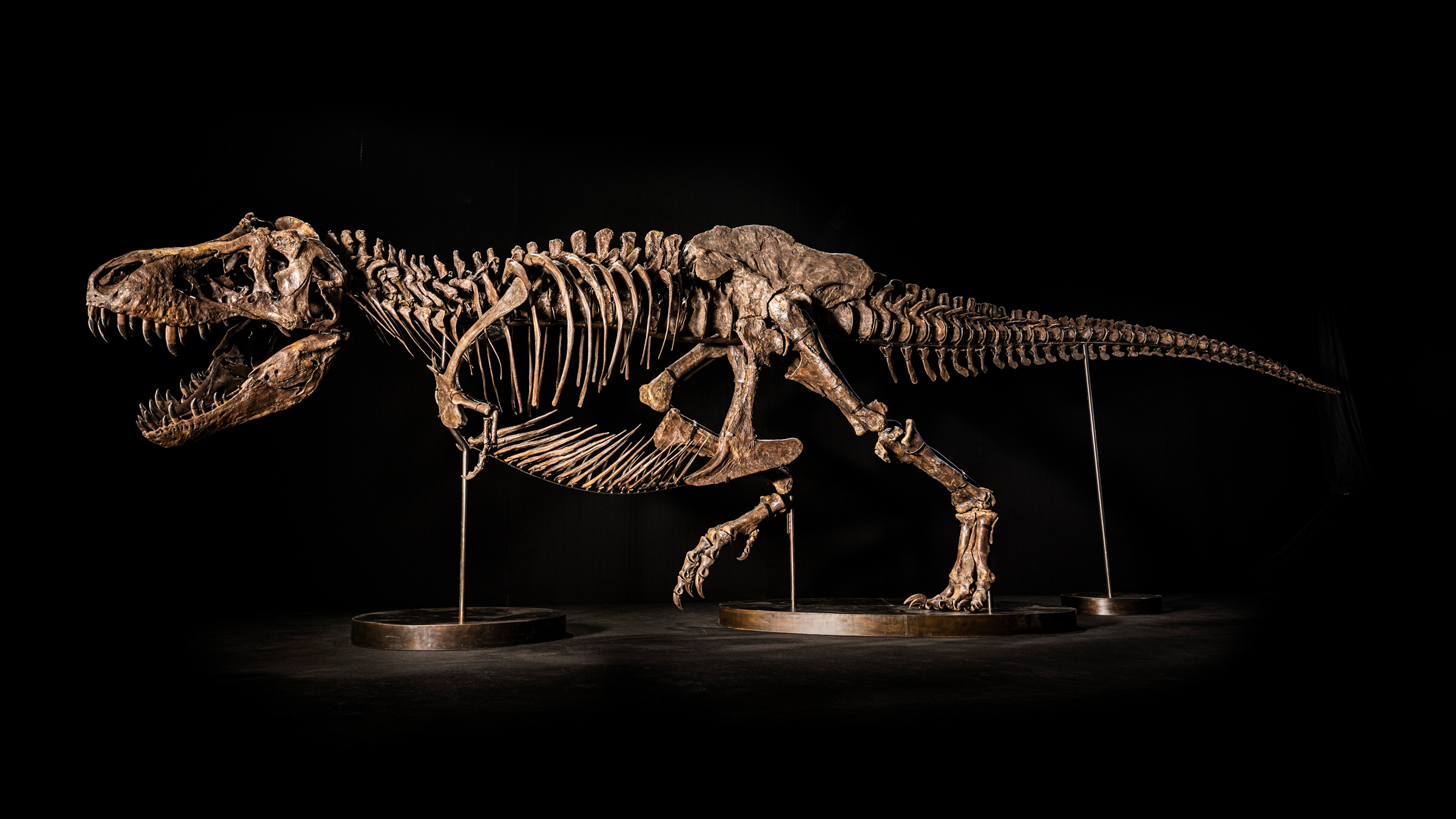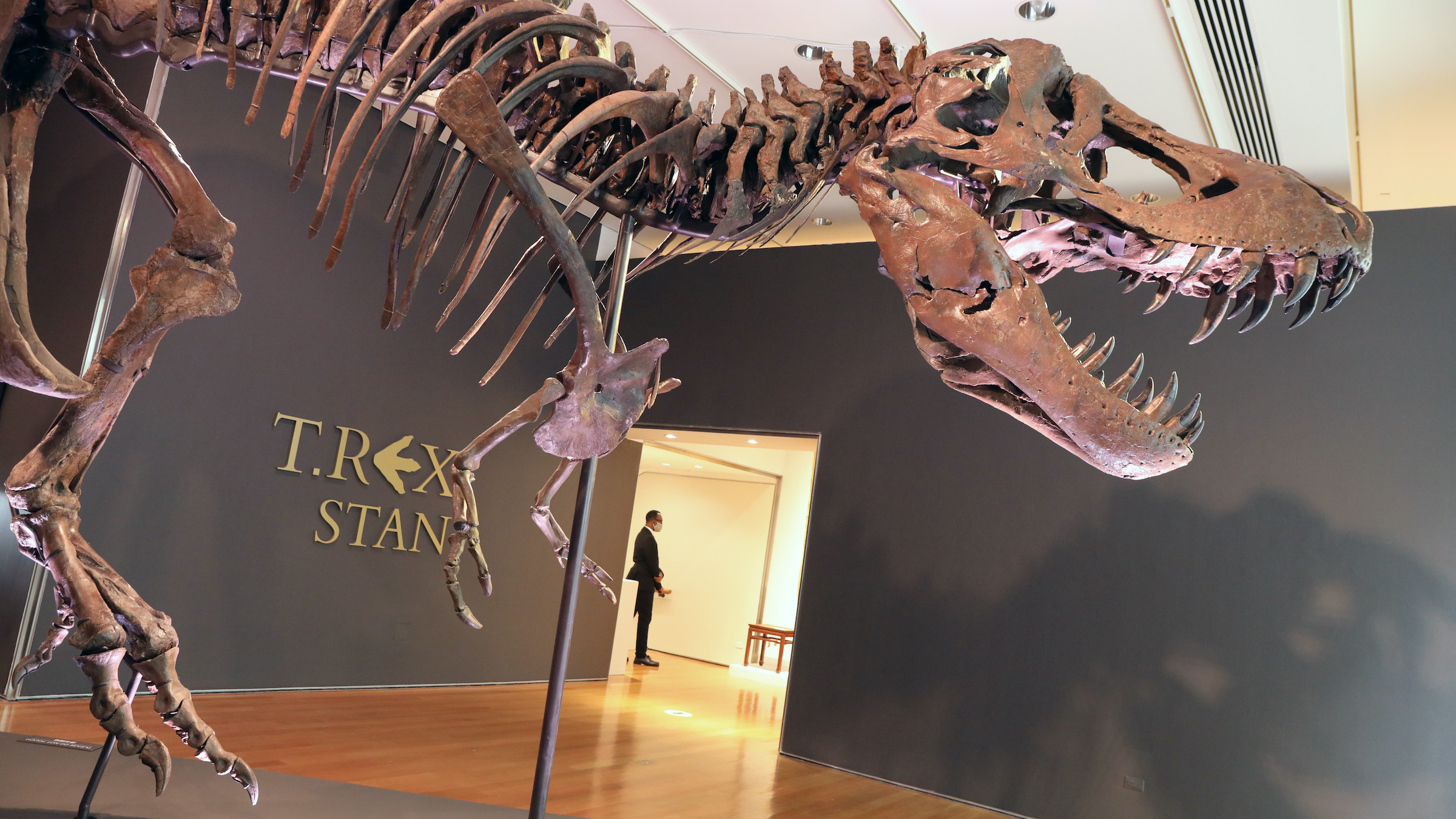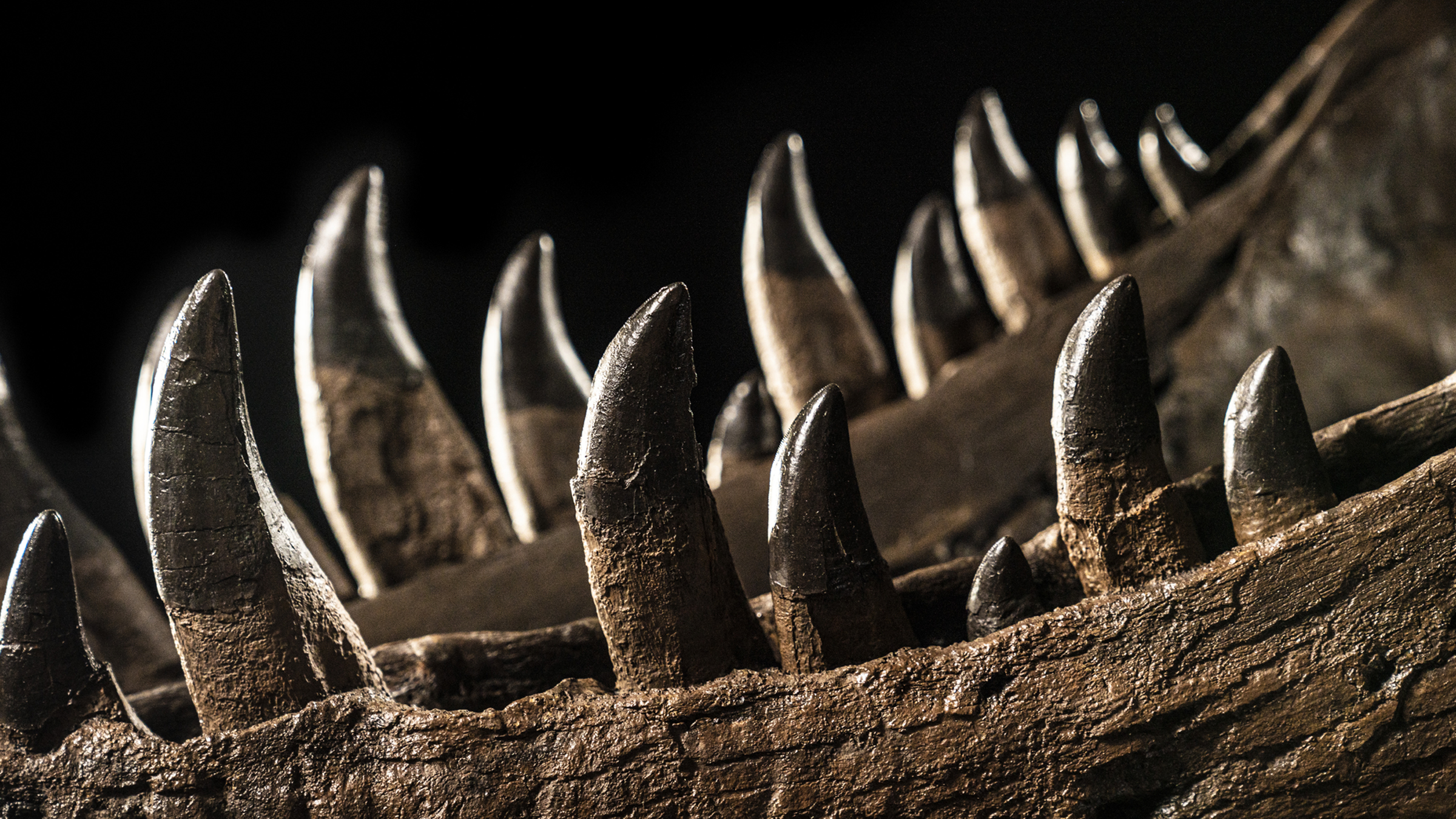$25 million auction of T. rex skeleton called off at the last minute over replica bone controversy
The auction house Christie's has called off the upcoming auction of a T. rex skeleton, known as Shen, after experts noticed it looked suspiciously similar to another famous T. rex specimen, Stan.

The sale of a Tyrannosaurus rex skeleton, which was expected to fetch up to $25 million, has been controversially called off shortly before the behemoth's bones were due to hit the auction block. The cancellation comes after experts raised concerns that a significant proportion of the bones are actually replicas from another famous T. rex skeleton, which was not disclosed by the auction house.
The T. rex skeleton, known as Shen, was uncovered at the Hell Creek Formation in Montana and dates back to between 66 million and 68 million years ago during the Cretacous period (145 million to 66 million years ago). Shen is around 40 feet (12.2 meters) long, 15 feet (4.6 m) tall and 7 feet (2.1 m) wide, and it weighs in at around 3,000 pounds (1,400 kg). The dinosaur king was due to be auctioned off in Hong Kong on Nov. 30 by the U.K.-based auction house Christie's, and would have been the first T. rex to be sold in Asia.
However, paleontologists noticed that a number of Shen's bones were remarkably similar to another famous T. rex skeleton, known as Stan, The New York Times reported. In 2020, Stan was auctioned by Christie's in New York for a whopping $32 million, making it the most expensive T. rex skeleton of all time.
After mounting criticism, Christie's announced on Nov. 20 that it was pulling Shen from the upcoming auction just 10 days before it was due to go under the hammer, saying that the specimen would "benefit from further study," The New York Times reported.
Related: Maximus, 'one of the best' T. rex skulls on record, could fetch $20 million at auction
The similarities between Shen and Stan were first spotted by paleontologists from the Black Hills Institute of Geological Research (BHIGR) — the South Dakota-based fossil company that excavated Stan in 1992 and later reassembled its skeleton. The most noticeable similarity between the two skeletons is a large hole in the lower left jaws, which was unique to Stan, BHIGR president Peter Larson told the New York times.
Despite selling Stan in 2020, BHIGR retained the intellectual property of the famous skeleton and has been using the copyright to create and sell painted polyurethane casts of the skeleton, which are currently priced at up to $120,000 each. (One of these casts was sold to Dwayne "The Rock" Johnson, which sparked speculation that the movie megastar was the mysterious buyer of Stan back in 2020.)
Sign up for the Live Science daily newsletter now
Get the world’s most fascinating discoveries delivered straight to your inbox.
After realizing that the company's copyright was possibly being infringed, BHIGR's lawyers contacted Christie's to see what was going on.

"They're using Stan to sell a dinosaur that's not Stan," Larson told the New York Times before the auction was called off. "It's very misleading."
The legal inquiry also raised another important question about the Shen skeleton — how many of the bones are actually original?
Related: T. rex could have been 70% bigger than fossils suggest, new study shows
Almost all dinosaur skeletons that come up for auction or are displayed in museums include at least some replica bones to complete the set. For example, the Stan skeleton contains 190 original bones — half the 380 bones that scientists believe make up a T. rex skeleton.

Christie's claimed that the Shen skeleton had a "bone density" of 54%, but this did little to quell scrutiny surrounding the bones because bone density is not a scientific term, according to The New York Times.
Eventually, Christie's changed the listing of Shen to reveal that only 79 of the bones were originals, and noted that a large number of replica bones had been based on Stan. But after continued pressure, the auction house has now called off the sale entirely.
"Christie’s did the right thing" in the end, Larson said.
Shen has now been loaned to an unnamed museum for public display until the issue is resolved, according to The New York Times.

Harry is a U.K.-based senior staff writer at Live Science. He studied marine biology at the University of Exeter before training to become a journalist. He covers a wide range of topics including space exploration, planetary science, space weather, climate change, animal behavior and paleontology. His recent work on the solar maximum won "best space submission" at the 2024 Aerospace Media Awards and was shortlisted in the "top scoop" category at the NCTJ Awards for Excellence in 2023. He also writes Live Science's weekly Earth from space series.









